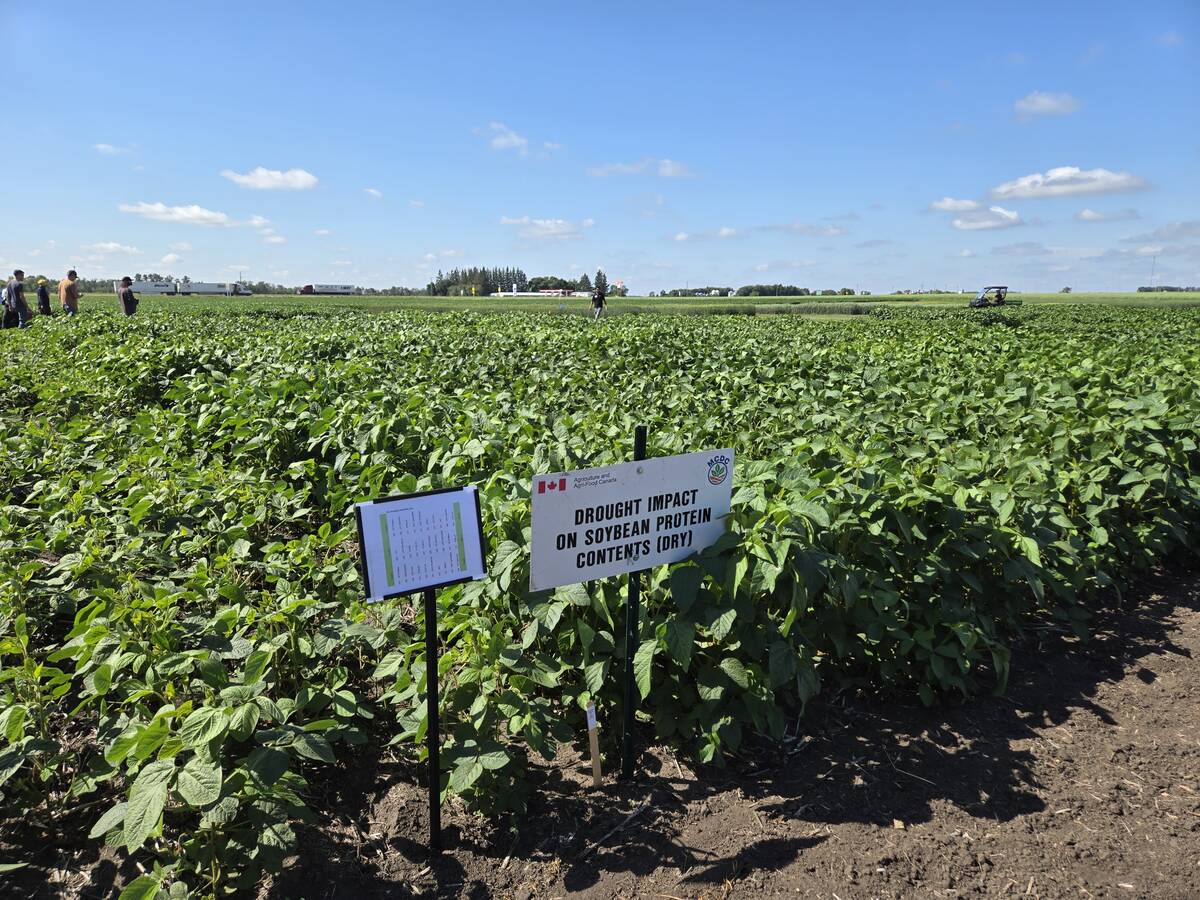When 30-year-old Charles Noble came to Canada from North Dakota in 1903, most farm work was hard, manual labour using oxen to pull a plow through the tough prairie sod.
It would take the relentless, erosive wind of the Dirty Thirties to inspire a new way of farming to make work easier and save vulnerable prairie soil. One of the key inventions was the Noble blade.
It was a heavy, steel sub-soil blade that cut weeds off at the roots without disturbing the soil surface. The idea came to Noble in 1935 when he saw machinery used in California to harvest beets, carrots and potatoes that used a blade to undercut the vegetables with little disturbance.
Read Also

Carberry field day looks for agriculture solutions
Manitoba farmers explored research solutions for resilient crops, perpetual agronomic issues and new kinds of agricultural products at a field day at the Manitoba Crop Diversification Centre in Carberry on Aug. 6.
Noble believed the same principle could be implemented on a larger scale and by the time he returned to Alberta, he was pulling a trailer with a 12 foot straight blade.
The concept was eventually modified to a V-shaped blade.
The idea was to use an implement that did not bury all plant residues but left some on the surface for protection against erosion.
By 1937 the cultivator was in mass production at Nobleford, Alta., and 50 were sold in the company’s first year.
Noble also developed a new style of drill for seeding that provided minimum soil disturbance.
Soil conservation and innovative farming techniques were important to Noble. From the time he and his wife first settled near Claresholm, Alta., in 1903, he was always looking for ways to farm better and smarter. The family moved to Noble, now called Nobleford, in 1909.
By 1913, the Noble Foundation Ltd. was formed to support agricultural research.
His first farm grew to 4,000 acres and he was among the first to employ a steam powered tractor, although he was also using eight to 12 horse teams.
As an early soil conservationist, Noble used various measures to protect his land, including planting winter wheat and rye. He was among the early adopters of strip farming to prevent soil drifting in the wind.
He excelled in crop production and broke world grain production records.
His record breaking crops were the result of a careful seed selection process he developed.
By 1922 he was farming about 30,000 acres worth $2.5 million. That same year his bank, the Spokane Trust Company, to whom Noble owed about $600,000, foreclosed on the Noble estate. He was 50 years old and the family was left with almost nothing.
The bank offered him a job at $4,000 a year to preside over the sale of his farming equipment. In a couple of years, he had saved up enough money to buy back his Grand View Farm and later, Cameron Ranch. By 1930, Noble was farming 8,000 acres incorporated under Noble Farms Ltd. and in 1936 he developed his revolutionary cultivator.
Noble was also among the first to use a combine rather than a threshing machine.
He received an honorary degree from the University of Alberta in 1952 and died from leukemia in 1957 at the age of 84.















